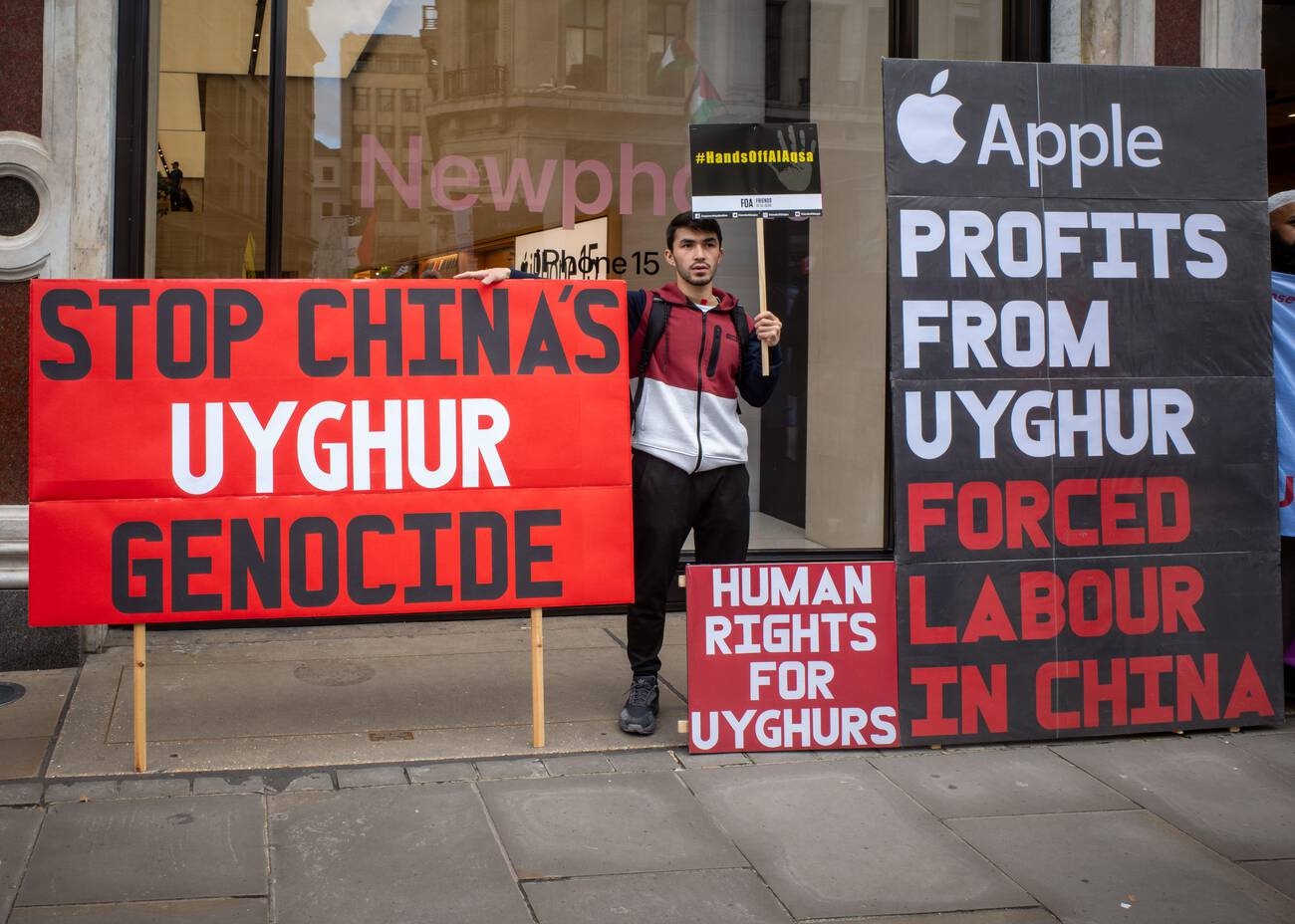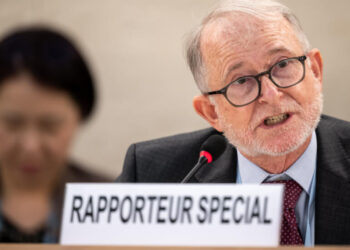Human Lives Human Rights: After the world’s most powerful military and economic power declared an unjustified global war on terror, the American people gave away their liberties more and more in exchange for security, and the US government seized that opportunity to the fullest, abusing the deaths of nearly 3,000 innocent Americans who have lost their lives in the terror attack.
As suggested by Thomas Hobbes‘ classic 17th-century treatise on government Leviathan, the American people turned their republic into a strong unitary state with absolute power, which in return waged wars, engaged in torture, and jealously guarded its secrecy, all in the supposed name of public safety.
In this article, we review the top five abuses of power by the US government since the 9/11 attacks, and how they shaped US society and the global order in general.
Middle East wars
After the war in Afghanistan against the Taliban and Al-Qaeda, in the immediate aftermath of 9/11, the US invaded Iraq, a nation that never attacked the US nor played any role in the 2001 attacks.
The stated military objective was to deny any safe haven for terrorist groups or “weapons of mass destruction,” but the economic aim was to control the oil-rich country’s natural resources. Ironically, the shale oil and gas revolution in the US that started in 2008 catapulted the US to become the world’s largest crude oil producer in late 2018.
While to this day the US still has thousands of troops in Iraq, its involvement there triggered massive local rebellions against the US presence and nonstop conflict throughout the Middle East – arguably making the region not safer, but exactly the opposite.
Estimates of the number of casualties, both civilian and military, in the Iraq War range widely, from 150,000 to over a million, but one thing is certain –millions were forcibly displaced and thousands were illegally detained and tortured.
Torture in Guantanamo Bay, Abu Ghraib prisons
Illegal kidnapping, and the detention and torture of people by the US government, whether Americans or foreigners, became an ordinary practice for the sake of national security after 9/11.
The Guantanamo Bay detention camp, at a naval base located in Cuba, has become synonymous with torture, a dark hole where individuals were detained indefinitely, and often in poor conditions, without any charge or trial.
US government offenses in the camp were harshly criticized by Amnesty International, as well as being against the Geneva Convention, and for violating the 5th and 14th amendments of the US Constitution.
Abu Ghraib prison in Iraq was another notorious facility where US military and CIA personnel committed a series of human rights violations against detainees, including physical abuse, torture, rape, and murder.
The horrific images released by the media in April 2004 resulted in widespread condemnation within the US and around the world. But, then-President George W. Bush claimed, implausibly, that the abuses were isolated incidents that were not committed systematically.
To this day the US government is believed to have many other detention camps and prisons across the world, as well as in international waters to bypass international law, and even detention planes using airspace.
Eighteen years after the US-led invasion that toppled the brutal dictatorship of Saddam Hussein, Iraq remains mired in human rights abuses.
Thousands of Iraqis are detained without trial or serving prison sentences imposed after unfair trials, torture remains rife and continues to be committed with impunity, and the new Iraq is one of the world’s leading executioners.
The government hanged 129 prisoners in 2012, while hundreds more languished on death row. Yet, when he launched the campaign of “shock and awe” in March 2003, that swept away Saddam Hussein’s regime within just four weeks, then US President George W Bush justified the military intervention partly on human rights grounds, pointing to the many grave crimes committed under the Iraqi leader.
The decade since, however, as this report shows, has brought only limited change although tens of thousands of Iraqis’ lives have been lost, mostly during the political and sectarian violence that succeeded the armed conflict and continues to this day.
As the record shows, in the years when they held sway, the US-dominated coalition of occupying forces created their own legacies of human rights abuse, for which there is yet to be full accountability, and failed to implement new standards that fundamentally challenged the mould of repression set under Saddam Hussein.
Today, assuredly, many Iraqis enjoy greater rights and freedom than existed under the ousted dictator but the margin of improvement is far less than it should be, and the country remains wracked by political, religious and other divisions and serious abuses of human rights.
Deadly violence in post-Saddam Iraq
The violence of the past decade has devastated Iraq and its people. By early 2013, the Iraq Body Count organization had recorded more than 110,000 violent civilian deaths, including at least 14,800 deaths it said were caused by the US-led Coalition Forces (renamed the Multinational Force at the official end of the occupation on 30 June 2004 and, subsequently, United States Forces – Iraq on 1 January 2010 after the departure of all non- US forces).
Many civilians have also been killed or injured by Iraqi forces acting alone, in joint operations by Iraqi and coalition forces, or by members of private military and security companies hired to guard and protect foreign officials and other foreign nationals employed or engaged in Iraq.
During the time of Saddam Hussein, Abu Ghraib, twenty miles west of Baghdad, was one of the world’s most notorious prisons, with torture, weekly executions, and vile living conditions. As many as fifty thousand men and women, no accurate count is possible were jammed into Abu Ghraib at one time, in twelve-by-twelve-foot cells that were little more than human holding pits.
In the looting that followed the regime’s collapse, last April, the huge prison complex, by then deserted, was stripped of everything that could be removed, including doors, windows, and bricks. The coalition authorities had the floors tiled, cells cleaned and repaired, and toilets, showers, and a new medical center added.
Abu Ghraib was now a U.S. military prison. Most of the prisoners, however, by the fall there were several thousand, including women and teenagers, were civilians, many of whom had been picked up in random military sweeps and at highway checkpoints.
They fell into three loosely defined categories: common criminals; security detainees suspected of “crimes against the coalition”; and a small number of suspected “high-value” leaders of the insurgency against the coalition forces.
Last June, Janis Karpinski, an Army reserve brigadier general, was named commander of the 800th Military Police Brigade and put in charge of military prisons in Iraq.
General Karpinski, the only female commander in the war zone, was an experienced operations and intelligence officer who had served with the Special Forces and in the 1991 Gulf War, but she had never run a prison system. Now she was in charge of three large jails, eight battalions, and thirty-four hundred Army reservists, most of whom, like her, had no training in handling prisoners.
Now she was in charge of three large jails, eight battalions, and thirty-four hundred Army reservists, most of whom, like her, had no training in handling prisoners. A month later, General Karpinski was formally admonished and quietly suspended, and a major investigation into the Army’s prison system, authorized by Lieutenant General Ricardo S. Sanchez, the senior commander in Iraq, was under way.
A fifty-three-page report, obtained by The New Yorker, written by Major General Antonio M. Taguba and not meant for public release, was completed in late February. Its conclusions about the institutional failures of the Army prison system were devastating. Specifically, Taguba found that between October and December of 2003 there were numerous instances of “sadistic, blatant, and wanton criminal abuses” at Abu Ghraib.
According to Taguba, this systematic and illegal abuse of detainees, was perpetrated by soldiers of the 372nd Military Police Company, and also by members of the American intelligence community.
There was stunning evidence to support the allegations, Taguba added—“detailed witness statements and the discovery of extremely graphic photographic evidence.” Taguba said Photographs and videos taken by the soldiers as the abuses were happening were not included in his report, because of their “extremely sensitive nature.”
The photographs—several of which were broadcasted on CBS’s “60 Minutes 2”—show leering G.I.s taunting naked Iraqi prisoners who are forced to assume humiliating poses. Six suspects—Staff Sergeant Ivan L. Frederick II, known as Chip, who was the senior enlisted man; Specialist Charles A. Graner; Sergeant Javal Davis; Specialist Megan Ambuhl; Specialist Sabrina Harman; and Private Jeremy Sivits—are now facing prosecution in Iraq, on charges that include conspiracy, dereliction of duty, cruelty toward prisoners, maltreatment, assault, and indecent acts. A seventh suspect, Private Lynndie England, was reassigned to Fort Bragg, North Carolina, after becoming pregnant.
Such dehumanization is unacceptable in any culture, but it is especially so in the Arab world. Homosexual acts are against Islamic law and it is humiliating for men to be naked in front of other men, Bernard Haykel, a professor of Middle Eastern studies at New York University, explained. “Being put on top of each other and forced to masturbate, being naked in front of each other—it’s all a form of torture,” Haykel said.
According to a report, US forces fired depleted uranium (DU) weapons at civilian areas and troops in Iraq in breach of official advice meant to prevent unnecessary suffering in conflicts.
The Dutch peacekeeping group Pax revealed the coordinates of US jets and tanks fired nearly 10,000 DU rounds in Iraq during the war in 2003. This is the first time that any US DU firing coordinates have been released, despite previous requests by the United Nations Environment Programme and the Iraqi government.
The use of banned weapons in civilian areas of Iraq
According to PAX’s report, the data shows that many of the DU rounds were fired in or near populated areas of Iraq, including As Samawah, Nasiriyah and Basrah. At least 1,500 rounds were also aimed at troops, the group says.
This conflicts with legal advice from the US Air Force in 1975 suggesting that DU weapons should only be used against hard targets like tanks and armored vehicles, the report says. This advice, designed to comply with international law by minimizing deaths and injuries to urban populations and troops, was largely ignored by US forces, it argues.
A six-page memo by Major James Miles and Will Carroll from the international law division of USAF’s Office of the Judge Advocate General concluded in March 1975 that DU weapons were legal. But it recommended imposing restrictions on how they were used.
“Use of this munition solely against personnel is prohibited if alternative weapons are available,” the memo stated. This was for legal reasons “related to the prohibitions against unnecessary suffering and poison”.
The memo also pointed out that DU weapons were “incendiary” and could have indiscriminate impacts in urban areas. “They may cause fires which spread thereby causing potential risks of disproportionate injury to civilians or damage to civilian objects,” it said. “Precautions to avoid or minimize such risks shall be taken in the use of this weapon or alternate available weapons should be used.”
PAX estimates that there are more than 300 sites in Iraq contaminated by DU, which will cost at least $30m to clean up. DU is a chemically toxic and radioactive heavy metal attractive to weapons designers because it is extremely hard and can pierce armour.
The author of the PAX report, Wim Zwijnenburg, said the US Air Force knew the harm that could be done by DU weapons and should not have used them in populated areas. “The use of DU against these targets questions the adherence of coalition forces to their own principles and guidelines,” he argued. “They should be held accountable for the consequences.”
The Dutch MoD then released the data to PAX in response to a request under freedom of information law. The release of the information was a “useful first step towards greater transparency”, said PAX, but the firing coordinates for most DU rounds remain unknown.
More than 300,000 DU rounds are estimated to have been fired during the 2003 Iraq war, the vast majority by US forces. A small fraction were from UK tanks, the coordinates for which were provided to the UN Environment Programme. A further 782,414 DU rounds are believed to have been fired during the earlier conflict in 1991, mostly by US forces.
The Democratic congressman, Jim McDermott, is now urging the US Department of Defence to publish all its DU firing coordinates. “These weapons have had terrible health ramifications for Iraqi civilians,” he said. “The least the US could do is provide the specific targeting data so the Iraqi government can begin the complex clean-up process.”
The US Department of Defence did not respond to a request to comment. One military source was “amazed” that the Dutch government had released sensitive targeting data.


















